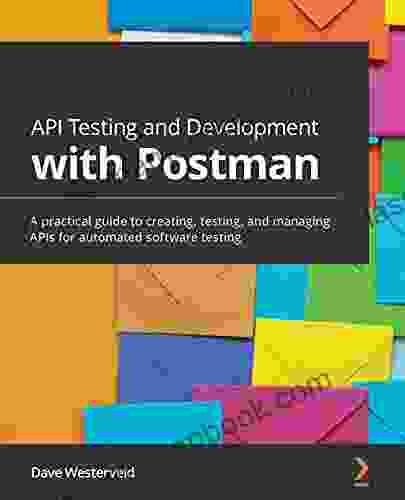Practical Guide to Creating, Testing, and Managing APIs for Automated Software

With the increasing adoption of automated software and cloud-based services, the importance of APIs (Application Programming Interfaces) has surged. APIs act as intermediaries, allowing different software components, systems, and applications to communicate and exchange data seamlessly. Developing, testing, and managing APIs effectively is crucial to ensure the reliability, performance, and security of automated software. This comprehensive guide provides a step-by-step approach to each phase, covering essential concepts, best practices, and industry-standard tools to empower you in creating robust and efficient APIs.
Start by clearly defining the purpose, scope, and functionality of your API. Identify the specific data and operations that it will expose. This forms the foundation for subsequent design and implementation.
Choose an appropriate architectural style (RESTful, SOAP, gRPC) that aligns with your requirements. Define the API endpoints, HTTP methods, request/response formats, and security mechanisms. Consider scalability, performance, and ease of use.
4.3 out of 5
| Language | : | English |
| File size | : | 6798 KB |
| Text-to-Speech | : | Enabled |
| Screen Reader | : | Supported |
| Enhanced typesetting | : | Enabled |
| Print length | : | 340 pages |
Code the API endpoints and their underlying logic. Ensure adherence to the defined architecture and standards. Use a programming language and framework suitable for API development, such as Python, Java, or Node.js.
Create comprehensive documentation that describes the API's endpoints, parameters, responses, and usage guidelines. This documentation is critical for developers consuming your API.
Test individual API endpoints in isolation, verifying their functionality and behavior under various inputs. Use unit testing frameworks such as JUnit, NUnit, or Pytest to automate these tests.
Test the API's interaction with other components or systems in an integrated environment. This ensures that the API works as expected when combined with other software elements.
Evaluate the API's performance under load, simulating real-world usage scenarios. Use tools like JMeter or LoadRunner to measure response times, throughput, and resource consumption.
Test the API's security measures to identify potential vulnerabilities. Use tools like OWASP ZAP or Burp Suite to perform penetration testing and ensure protection against common attacks.
Manage API versions to handle API changes and maintain compatibility with existing consumers. Implement versioning strategies such as URL path versioning or header-based versioning.
Continuously monitor the API's performance, usage, and potential issues. Use tools like Prometheus, Grafana, or New Relic to track metrics, logs, and alerts.
Plan for API deprecation and retirement when necessary. Communicate changes to API consumers in advance and provide a migration path to newer versions or alternative solutions.
Establish guidelines and processes for API creation, testing, and management. Define roles and responsibilities for API development and governance.
- Follow industry standards: Adhere to established API design principles, such as RESTful best practices and OpenAPI (Swagger) specifications.
- Prioritize security: Implement robust security measures to protect APIs from unauthorized access, data breaches, and malicious attacks.
- Foster documentation: Provide clear and comprehensive API documentation to aid developers in understanding and consuming your API effectively.
- Enable automation: Leverage automation tools for testing, monitoring, and deployment to streamline API management processes.
- Monitor and improve: Continuously monitor API performance and user feedback to identify areas for improvement and maintain API quality.
Creating, testing, and managing APIs is a critical aspect of developing robust and efficient automated software. By following the steps outlined in this guide, you can design, implement, and maintain high-quality APIs that empower your software applications to communicate seamlessly. Embrace best practices, leverage industry-standard tools, and establish a culture of API governance to ensure the success of your automated software systems.
4.3 out of 5
| Language | : | English |
| File size | : | 6798 KB |
| Text-to-Speech | : | Enabled |
| Screen Reader | : | Supported |
| Enhanced typesetting | : | Enabled |
| Print length | : | 340 pages |
Do you want to contribute by writing guest posts on this blog?
Please contact us and send us a resume of previous articles that you have written.
 Top Book
Top Book Novel
Novel Fiction
Fiction Nonfiction
Nonfiction Literature
Literature Paperback
Paperback Hardcover
Hardcover E-book
E-book Audiobook
Audiobook Bestseller
Bestseller Classic
Classic Mystery
Mystery Thriller
Thriller Romance
Romance Fantasy
Fantasy Science Fiction
Science Fiction Biography
Biography Memoir
Memoir Autobiography
Autobiography Poetry
Poetry Drama
Drama Historical Fiction
Historical Fiction Self-help
Self-help Young Adult
Young Adult Childrens Books
Childrens Books Graphic Novel
Graphic Novel Anthology
Anthology Series
Series Encyclopedia
Encyclopedia Reference
Reference Guidebook
Guidebook Textbook
Textbook Workbook
Workbook Journal
Journal Diary
Diary Manuscript
Manuscript Folio
Folio Pulp Fiction
Pulp Fiction Short Stories
Short Stories Fairy Tales
Fairy Tales Fables
Fables Mythology
Mythology Philosophy
Philosophy Religion
Religion Spirituality
Spirituality Essays
Essays Critique
Critique Commentary
Commentary Glossary
Glossary Bibliography
Bibliography Index
Index Table of Contents
Table of Contents Preface
Preface Introduction
Introduction Foreword
Foreword Afterword
Afterword Appendices
Appendices Annotations
Annotations Footnotes
Footnotes Epilogue
Epilogue Prologue
Prologue Simon Scarrow
Simon Scarrow Terry James
Terry James Raleigh Briggs
Raleigh Briggs Julie Kane
Julie Kane Justin Fenton
Justin Fenton Anzhela Shaposhnyk
Anzhela Shaposhnyk Chris Heimerdinger
Chris Heimerdinger Kenneth Rexroth
Kenneth Rexroth James Lee Burke
James Lee Burke William Powell
William Powell Aria Norton
Aria Norton Petros C Mavroidis
Petros C Mavroidis Jane Farrow
Jane Farrow Susan Frybort
Susan Frybort T Heather Herdman
T Heather Herdman William Boyle
William Boyle L M Sanguinette
L M Sanguinette Karen Jones
Karen Jones Barry Libert
Barry Libert Kim Wilkes
Kim Wilkes
Light bulbAdvertise smarter! Our strategic ad space ensures maximum exposure. Reserve your spot today!

 Haruki MurakamiAn Engaging Activity for Adults and Consultants: Exploring the Benefits of...
Haruki MurakamiAn Engaging Activity for Adults and Consultants: Exploring the Benefits of...
 Orson Scott CardExploring the Dark and Gothic World of "Tomb of Dracula" (1972-1979) by Marv...
Orson Scott CardExploring the Dark and Gothic World of "Tomb of Dracula" (1972-1979) by Marv... Chuck MitchellFollow ·4k
Chuck MitchellFollow ·4k Rod WardFollow ·3.5k
Rod WardFollow ·3.5k Jack PowellFollow ·6k
Jack PowellFollow ·6k Andy ColeFollow ·14.7k
Andy ColeFollow ·14.7k Guy PowellFollow ·19.4k
Guy PowellFollow ·19.4k Pat MitchellFollow ·2.8k
Pat MitchellFollow ·2.8k John Dos PassosFollow ·2.8k
John Dos PassosFollow ·2.8k Braeden HayesFollow ·13.5k
Braeden HayesFollow ·13.5k

 Bryan Gray
Bryan GrayCello Alternativo: Exploring Contemporary Pizzicato...
: Embracing the Avant-Garde Within...

 Victor Hugo
Victor HugoThe Social Revolution: Barry Libert's Vision for a More...
In a world where...

 Tony Carter
Tony CarterA Comprehensive Guide to Crafting Clear and Effective Job...
A job description is a critical tool...

 Deacon Bell
Deacon BellSelected Poems And Prose Lorenzo Da Ponte Italian Library
Lorenzo Da Ponte, born...

 Francisco Cox
Francisco CoxWhat You Need To Know About Opportunity Cost: A...
Opportunity cost is a fundamental concept...

 Bill Grant
Bill GrantWhy Our Kids With Behavioral Challenges Are Falling...
Every year,...
4.3 out of 5
| Language | : | English |
| File size | : | 6798 KB |
| Text-to-Speech | : | Enabled |
| Screen Reader | : | Supported |
| Enhanced typesetting | : | Enabled |
| Print length | : | 340 pages |








